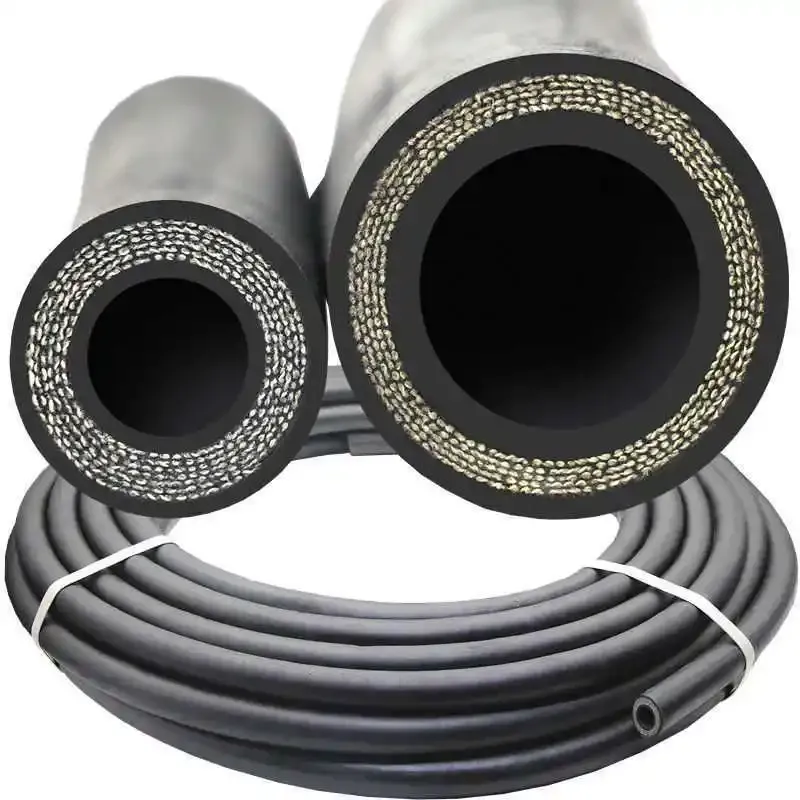
1 月 . 24, 2025 04:41 Back to list
PP Spiral Guard


Replacing a turbo hose may appear to be a daunting task, but with the right guidance and tools, it can be a straightforward process. Vehicle owners should always opt for OEM (Original Equipment Manufacturer) replacement hoses, as these are specifically designed for their particular make and model. While aftermarket parts may be cheaper, they often lack the precision engineering and material quality that OEM parts offer, potentially leading to premature failure or reduced performance. Moreover, choosing a reputable manufacturer for turbo hoses ensures better quality control and testing procedures, aligning with the latest automotive standards. This aspect contributes significantly to the trustworthiness and reliability of the product. A high-quality turbo hose from a reputable manufacturer not only assures compatibility and performance but also enhances the vehicle's resale value, as it symbolizes well-maintained engine components. Beyond replacement, the expertise in installing turbo hoses should not be underestimated. For those without sufficient mechanical knowledge, it is advisable to seek professional assistance from certified technicians. Correct installation eliminates potential risks of leaks or misalignments, ensuring that the turbocharger operates at its peak efficiency. Well-installed turbo hoses safeguard the turbo system and by extension, the engine from undue stress and wear. Additionally, advancements in materials and technology have introduced a new breed of turbo hoses into the market. These modern hoses boast improved durability, flexibility, and heat resistance, reflecting advancements in automotive engineering. Some offer enhanced performance features, such as reduced heat soak, which keep engine temperatures lower and increase overall vehicle efficiency. Staying updated with these advancements can significantly improve vehicle performance and longevity. In conclusion, turbo hoses, while small in size compared to other engine components, play a vital role in a vehicle's turbocharging system. Ensuring they are in good working condition encompasses more than just regular maintenance but also involves selecting the right products and services. Turbo hoses, by facilitating optimal airflow, can significantly enhance engine performance, improve fuel efficiency, and contribute to the longevity of a vehicle. Therefore, proper understanding and care of these components are indispensable for anyone looking to maximize their vehicle's potential.
Latest News
Steel Wire Reinforced Hydraulic Hose SAE 100 R1 / EN853 1SN S
NewsOct.17,2024
Two Layers Steel Wire Reinforced Hydraulic Hose SAE 100 R2 / EN853 2SN
NewsSep.03,2024
Textile Braid Reinforced Hydraulic Hose SAE100 R3+R6
NewsSep.03,2024
Textile Reinforced Hydraulic oil Suction Hose with embedded Steel Wire SAE 100 R4
NewsSep.03,2024
Single Wire Braid and Textile Covered Hydraulic Hose SAE 100 R5
NewsSep.03,2024
High Pressure Thermoplastic Hydraulic Hose SAE 100 R7 / EN855 R7 - SAE 100 R8 / EN855 R8
NewsSep.03,2024
Heavy Duty Four-layer Steel Wire Spiral Reinforced Hydraulic Hose SAE100R9+R10+R12
NewsSep.03,2024
Heavy Duty Multi-layer Steel Wire Reinforced Hydraulic Hose SAE100R13 SAE100R15
NewsSep.03,2024
Latest Products











